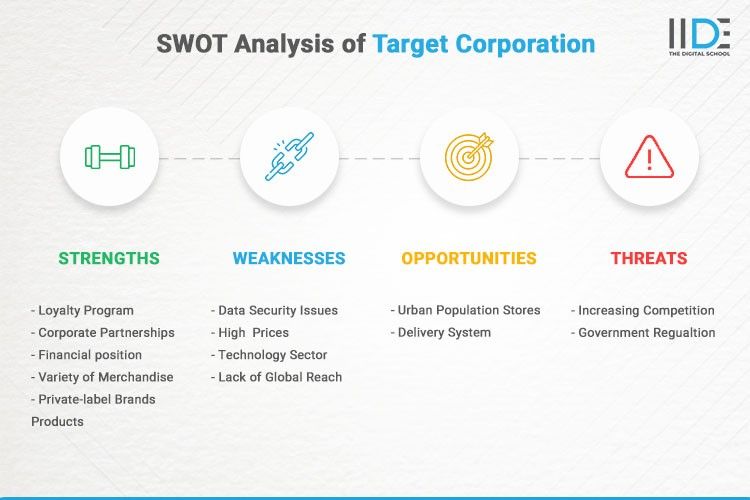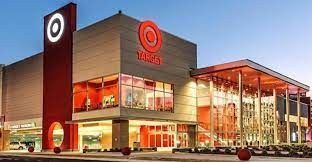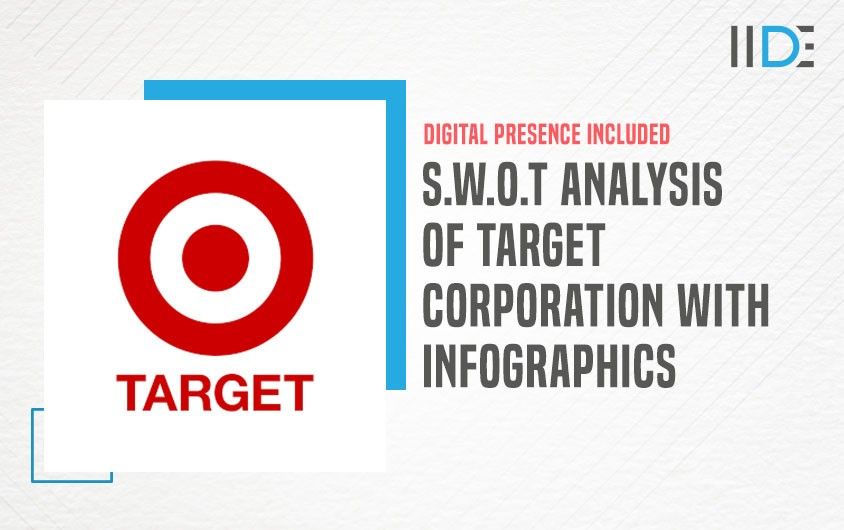About Target Corporation
Target Corporation is an American retailer that specialises on brand-new items, including both hardlines and softlines. It is the United States’ eighth-largest retailer. Target Plaza in Minneapolis, Minnesota, is where the company’s headquarters are located.
“Customize each shop to guarantee a regionally appropriate experience,” was Target’s main goal. It was created 194 years ago on June 24, 1902, in Roseville, Minnesota. Target opened its first shop in Minneapolis, under Dayton’s firm, in 1962, and began growing the store countrywide in the 1980s as part of Dayton’s Hudson organisation.
In the 1990s, it unveiled a new Target store model under the Target name. As the industry’s “cheap-chic” player, the brand has had a lot of success. In 2000, the main business was renamed the target corporation, and in 2004, it sold its final department store brands.
Quick Stats on Target Corporation| Founder | George Dayton (corporation)
John Gelsse (store) |
|---|
| Year Founded | 1902 (corporation)
1962 (store) |
|---|
| Origin | Minnesota, United States |
|---|
| No. of Employees | 409,000 |
|---|
| Company Type | Public |
|---|
| Market Cap | $127,149 Million (2021) |
|---|
| Annual Revenue | $93,561 Million (2021) |
|---|
| Net Profit | $4,368 Million (2021) |
|---|
Products by Target Corporation
Following are the products we can find at Target –
- Food & Beverages
- Beauty & Health Products
- Clothing, Accessories & Footwear
- Pet Supplies
- Toys/Games/Sports
- Bedding & Furniture
- Electronics & Home Appliances
- Lawn & Garden Supplies
- Travel Supplies
- School, Office & Party Supplies
Competitors of Target Corporation
Target has won the hearts of the American market, however, they aren’t the only standing big retailers –
- Walmart
- Best Buy
- Amazon
- Costco
- Kroger
SWOT Analysis of Target Corporation

The Target SWOT evaluation framework can help recognize the company’s internal strategic elements – strength and weakness, and their external strategic elements – opportunities and threats.
1. Strengths of Target Corporation
Strengths determine the organization’s advantageous factors. These factors give Target the upper hand over its competitors. Following are Target’s strengths –
- Loyalty Program – In 2010, Target launched the REDcard Rewards loyalty software programme, through which regular customers save expenses on purchases made at Target stores or Target.com. REDcard had a twenty-one per cent penetration rate within five years of its inception, hence, customers’ loyalty and business are guaranteed.
- Corporate Partnerships – The majority of Target stores include a Starbucks outlet providing popular consumer attraction. CVS also took over the operations of all Target pharmacies, establishing another tight synergy between two powerful companies. These kinds of collaborations help everyone increase income.
- Financial position – Target Corporation has a sturdy financial base. They have been gaining market slowly, but, truly for about over 100 years.
- Variety of Merchandise – Target provides a wide range of products to its clients, including ranging from clothing to sports equipment. The customer doesn’t have to go anywhere else to shop once he enters the store. Target’s molecular app now not only accurately proposes what users are looking for, but also similar goods connected to their preferences.
- Private-label Brands Products – Target sells private-label products, which are created only by and/or for that store. These items are usually sold at a cheaper price than the competitors, with a larger portion of the sales revenues going to the store. Exclusive fashion lines, food brands, and more are among Target’s private-label goods, and many customers are particularly devoted to them.
2. Weaknesses of Target Corporation
The weaknesses of an organization are seen from the reaction of the customers and management issues. It is usually a limitation or a deficiency in some resources of the organization about its competitors which makes the organization or firm with less successful performance.
- High Prices – Critics typically accuse Target of being a chic retail store. Business executives conducted a study, and in keeping with their report, Target’s prices at the country’s biggest competitors are concerning different malls like Walmart.
- Technology Sector – Target Corporation is outlying enough money to grow its technology sites, however, it’s still behind in this sector. The maximum amount of its competition is leading in this area, hence posing as a significant inconvenience to Target.
- Data Security Issues – Target has been embroiled in a series of high-profile data breaches. It is vital to maintain customers’ account data safely. More crucially, Target provides credit services, and those accounts have also been compromised, exposing even more sensitive financial information about consumers.
- Lack of Global Reach – Target may be a century-old corporation, but it hasn’t penetrated international borders like other worldwide companies. They are unbeaten in the United States, but they do not have a global presence. From 2011 to 2015, the firm established 133 retail shops in the North American country before being forced to close all of them. Target didn’t do it since it was one of the company’s worst flops in the foreign market.
3. Opportunities for Target Corporation
Opportunities are everywhere; they may be adjustments in technology, authorities policy, social patterns, etc. It is crucial for an organisation to recognise and seize the opportunities in order to hold its position in the market.
- Delivery System – Like its competitors Amazon and Walmart, the company has lately launched a brand-new service that allows customers to return products in as little as one day. It has become viable after Target acquired the same service, Shipt, for roughly 500 million dollars, which is used by several competitors. In recent years, online purchasing and delivering gadgets have proven to be a fiercely competitive business.
- Urban Population Stores – Target’s brand impression relies on suburban families and younger shoppers. Big-box retailers aren’t necessarily situated in larger, more densely populated cities. Entering into this market would allow them to expand their client base with very little effort.

4. Threats to Target Corporation
- Increasing competition – Many new businesses are springing up in this new industry these days. This will raise the level of competitiveness. Target Corporation’s most dangerous competitor in the consumer market is Walmart. Amazon, Home Depot, Costco Wholesale, and a slew of other competitors are among the others.
- Government Regulation – The laws and policies imposed by the government can be a significant risk for Target Corporation, particularly if it does not stick to its profit-driven overall strategy.
A SWOT Analysis is a great approach for successful retailers like Target to break down their operations and analyse management risks and rewards. This brings us to the conclusion of this case study on the SWOT Analysis of Target Corporation.









